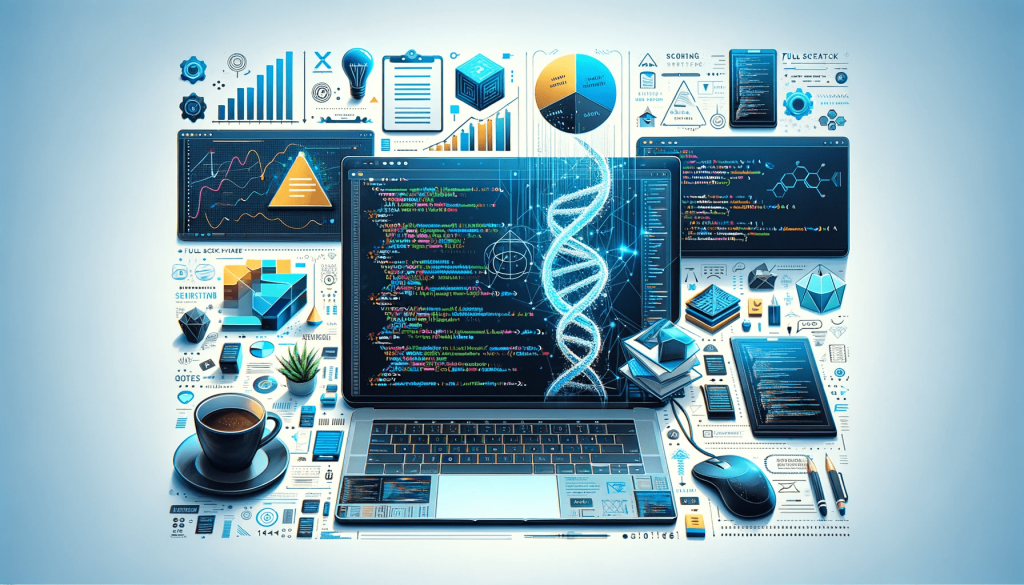TCP/IP and DNS: How Domain Name Resolution Works

When you type a website address into your web browser, such as “www.example.com“, your computer doesn’t know what that address means. Instead, it needs to use a process called domain name resolution to figure out what IP address is associated with that domain name. This process is essential for the functioning of the internet, and it relies on two critical protocols: TCP/IP and DNS.
In this blog post, we’ll explore how TCP/IP and DNS work together to enable domain name resolution, how the system handles different types of requests, and how it helps to keep the internet running smoothly.
TCP/IP: The Backbone of the Internet
TCP/IP, or Transmission Control Protocol/Internet Protocol, is a set of networking protocols that are used to connect devices to the internet. It provides a standard way for data to be sent and received between different devices, regardless of their location or operating system.
TCP is responsible for breaking data into packets, sending them over the internet, and reassembling them at the other end. It’s a reliable protocol that ensures that data is transmitted accurately and in the correct order. IP, on the other hand, is responsible for routing data between devices on the internet, using a unique IP address for each device.
Together, TCP/IP enables data to be sent and received over the internet, creating a vast network of connected devices that we know as the world wide web. However, for devices to communicate with each other, they need to be able to identify each other using unique identifiers – and that’s where DNS comes in.
DNS: The Phonebook of the Internet
DNS, or Domain Name System, is a protocol that converts human-readable domain names (like “www.example.com“) into IP addresses that computers can use to communicate with each other. It works like a phonebook for the internet, providing a way to look up the IP address associated with a domain name.
When you enter a domain name into your web browser, your computer sends a DNS query to a DNS server. This server is responsible for looking up the IP address associated with the domain name and sending it back to your computer. This process is known as domain name resolution.
The DNS system is hierarchical, with different levels of servers responsible for different parts of the domain name system. At the top level are the root servers, which are responsible for managing the DNS system as a whole. Below that are the top-level domain (TLD) servers, which manage the different domain extensions (like .com, .org, .net, and so on). Finally, there are the authoritative name servers, which are responsible for managing individual domain names.
The process of domain name resolution begins with your computer sending a DNS query to a local DNS server. This server is typically provided by your internet service provider (ISP) and is responsible for caching DNS records to speed up the process of domain name resolution.
If the local DNS server has a cached record of the IP address associated with the domain name, it will return that record to your computer. If not, it will send a query to one of the root servers to find out which TLD server is responsible for the domain extension in question.
Once the TLD server is identified, the local DNS server sends a query to that server to find out which authoritative name server is responsible for the domain name. The authoritative name server is the final authority on which IP address is associated with the domain name, and it’s responsible for returning that information to the local DNS server.
Finally, the local DNS server returns the IP address to your computer, which can then use that address to connect to the server hosting the website associated with the domain name.
Types of DNS Requests
There are several types of DNS requests that your computer can send, depending on what information it needs to retrieve. The most common types of DNS requests include:
- Recursive queries: This is the most common type of DNS query, where your computer sends a query to a DNS server and expects a complete answer in response. The DNS server will recursively look up the IP address associated with the domain name and return it to your computer.
- Iterative queries: In this type of DNS query, your computer sends a query to a DNS server and expects a list of other DNS servers that might be able to answer the query. The DNS server will respond with a referral to another DNS server, and your computer will send the query to that server instead.
- Reverse queries: This type of query is used to look up a domain name based on an IP address. Instead of sending a domain name to the DNS server, your computer sends an IP address, and the server responds with the domain name associated with that address.
- Dynamic DNS: Dynamic DNS is a service that allows devices with dynamic IP addresses (like home routers) to update their DNS records automatically. This ensures that the domain name associated with the device is always up-to-date, even if the IP address changes.
The Importance of DNS
DNS is a critical component of the internet, and without it, we wouldn’t be able to use domain names to access websites and other resources online. It provides a way for computers to identify each other and communicate effectively, and it’s essential for the functioning of e-commerce, email, and many other internet-based services.
DNS also plays an important role in internet security. By allowing domain owners to control the IP address associated with their domain name, DNS helps to prevent spoofing and other forms of online fraud. It’s also used to implement security measures like DNSSEC (Domain Name System Security Extensions), which provides a way to verify the authenticity of DNS records and prevent attacks like DNS cache poisoning.
Conclusion
In conclusion, TCP/IP and DNS are two critical protocols that work together to enable domain name resolution and keep the internet running smoothly. TCP/IP provides a way for devices to communicate over the internet, while DNS provides a way to translate human-readable domain names into IP addresses that computers can use to communicate with each other.
The DNS system is hierarchical, with different levels of servers responsible for managing different parts of the domain name system. And there are several types of DNS queries that computers can send, depending on what information they need to retrieve.
DNS is an essential component of the internet, and it plays a crucial role in enabling e-commerce, email, and many other online services. It’s also essential for internet security, helping to prevent spoofing and other forms of online fraud.
I hope that this blog post has helped you to understand how TCP/IP and DNS work together to enable domain name resolution, and why DNS is such an important part of the internet. If you have any questions or comments, please feel free to leave them below!






 and then
and then
Responses